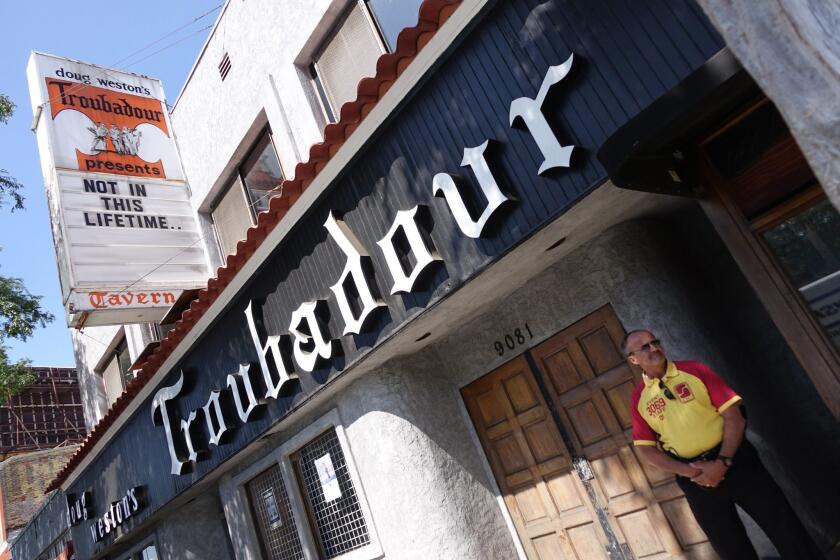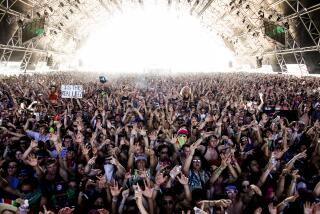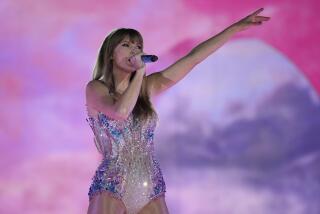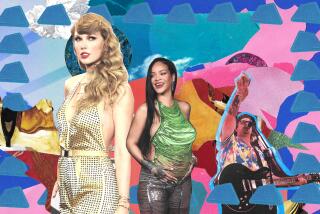Concert tours are on hold. But sponsored livestreams can save musicians’ paychecks
At 5 p.m. on Saturday last week, Diplo and Dillon Francis — A-list DJs and dance music producers — hopped behind their decks to spin a quarantine livestream. In front of a psychedelically oozing virtual background, they played an hour of house and Latin club music. “Are we raving? Are we all raving together?” Diplo shouted to around 250 viewers on Instagram Live at the set’s halfway mark (it was also broadcast on Zoom). For the usual festival headliners, this amounted to a bar gig.
Don’t feel bad for them. The set was sponsored by the fast-food chain Jack in the Box, and posed as a substitute prom for a pair of Los Angeles-area high schools, whose students lightheartedly heckled them in the comments. “Put some taco sauce on this track,” one implored.
Diplo, a recent Calvin Klein underwear model, is no stranger to advertisers. But with his “Prom in the Box” set, he may have seen the future.
When COVID-19 lockdowns began in March, the sudden necessity of livestreamed performances created a rush of attention from housebound music fans. From Global Citizen’s celeb-packed “One World: Together at Home” to Instagram Live’s wildly popular hip-hop/R&B hitmaker showdowns, these sets were a rare shared experience in quarantine.
California is slowly reopening, providing hope that you might soon see your favorite artist in concert. But from an arena stage? A computer screen? A drive-in?
But what started as a spontaneous way to pantomime playing live has quickly become a budding industry. For musicians facing the collapse of touring, such sponsored streams may be the closest thing they get to live-gig paychecks.
“If touring doesn’t exist for another year, what replaces that income?” asked Elena Awbrey, a partner at the firm Tiger’s Eye, which manages former Fifth Harmony singer Lauren Jauregui and rising rapper/singer Chika, who have or will later perform livestream sets for 1800 Tequila. “It’s definitely a new frontier, but it gives us permission to go to places we hadn’t gone before. As we see traditional revenue streams dry up, it takes a leap to get to where new ones are.”
COVID-19 has kneecapped even huge acts like Lady Gaga and Alicia Keys, who have had albums and tour cycles pushed back in the pandemic. Music streaming services like Spotify have not seen stratospheric quarantine growth like Netflix. TikTok, the breakout platform — TikTok, with over 300 million downloads in the first quarter of 2020, — can launch an artist’s career, butwithout touring, there are fewer ways to capitalize.
“Sponsorships have always been a supplement to ticketing,” said Andrew Hampp, founder of the music marketing consultancy 1803 LLC, which brokers deals between brands and artists. “Ticketing was the backbone of touring revenue, and when that goes away, it’s a huge hurdle. We haven’t quite cracked this next phase yet.”
“When quarantine happened, our entire industry collapsed,” said Patrick Struys, an L.A. club promoter and nightlife photographer who turned to livestreaming for his Club House party series. “Nightlife is an ecosystem that supports bartenders to photographers. The majority of DJs rely on weekly gigs to pay rent.”
The general manager of the Troubadour, which famously launched Elton John’s career, says ‘to survive, we’re going to need all the help we can get.’
Most of the DJs that Club House books for its streams are local working acts, with some bigger artists like A-Trak and Jidenna stopping by. The shows average around 5,000 viewers and 75,000 minutes watched per show, Club House says. That landed sponsorships from millennial-friendly brands like Beats By Dre and Bumble, and Club House pools those resources to give every DJ at least $200 for a one-hour set. That can make a big difference.
“One of our DJs told us, ‘I watched 12 years of hard work disappear,’” Struys said. “Brands really have helped.”
Brands, of course, have always wanted in on live music. Whole festivals have sprung up as proxies for beer brands (like Budweiser’s Made in America). Stagecoach’s main stages have been sponsored since the country fest’s inception. Red Bull built an entire shadow underground rave scene to promote its energy drinks.
Hampp said that before COVID-19, an artist playing a theater-sized gig could make around $75,000 to $100,000 from sponsorships alone. In the at-home livestreaming era, fees are less than half that, sometime 75% less (though overhead to perform is also significantly less).
Artists and their crews are growing restless for answers. Musicians who don’t make their living from streams or sync placements have to find a way to make money off the livestream boom.
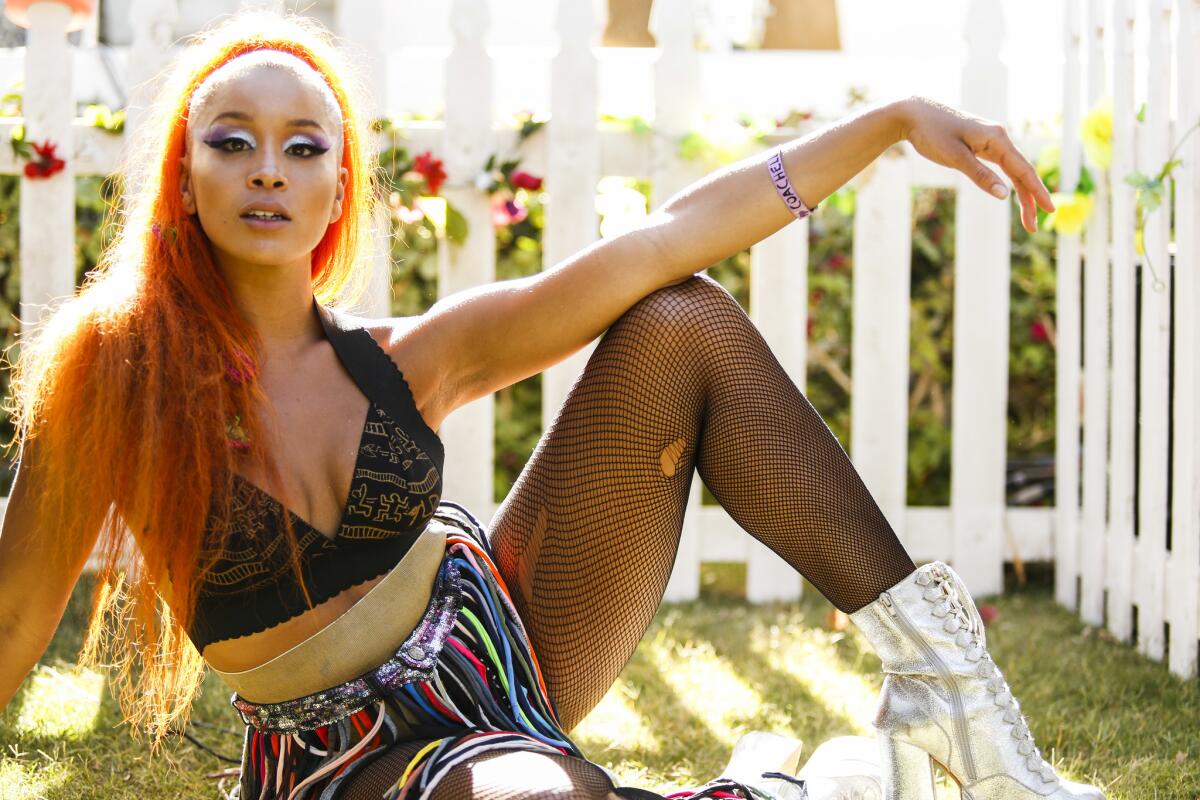
“The monetization of the livestream concert is already happening now, “ said le’Roy Benros, the senior vice president of A&R at First Access Entertainment and manager of the duo Lion Babe.
Benros recently oversaw a geofenced digital “tour” for Lion Babe and Kwamie Liv, making free tickets available only to fans in the area where they would have performed anyway. It was good for fan loyalty, but he acknowledged that acts will eventually need to make it pay.
“The economy has taken a big hit, and brands are trying to find creative and effective ways to reach their demographic,” Benros said. “Brands also know that a main source of an independent artist’s revenue stream has been depleted. I think it’s a mutually beneficial partnership as long as it doesn’t compromise the integrity and aesthetic of the artist.”
So how can artists reach fans in a genuine way and keep an income flowing, without pandering too hard in the midst of a pandemic?
“Everything shifted immediately and everyone had to adapt to new tools,” said Michelle Edgar, the founder of SoundBytes, a behind-the-scenes group of music and marketing executives now trying to navigate the COVID-19 livestream era. By day, she’s the vice president of brand marketing at Epic Records, and knows the scale of challenges artists face in figuring this moment out.
Right now, sponsored streams “can be oversaturated, and a question of quality versus quantity,” Edgar said. “We see that it works when we keep it super-curated, with companies that have already been active here.”
From Drake to 5 Seconds of Summer to Kehlani, videos shot in quarantine have become a go-to medium to renegotiate the social contract of pop stardom.
For five years, Budweiser has thrown a livestreamed “Dive Bar” tour of small venues, including a Lady Gaga gig at the Satellite in Silver Lake. On Friday, they began a new livestream concert series (promoting a hard seltzer) with bachata stars Romeo Santos and Aventura and Colombian singer Karol G. Brad Paisley and Lady Antebellum are up next.
Shana Barry, the head of music and entertainment partnerships at Anheuser-Busch InBev, has overseen Super Bowl ads with Post Malone that came with astronomical budgets. Quarantine livestreams were a big upheaval, but acts aren’t anticipating many other live dates soon.
“This forced us all into a test mode,” Barry said. “We wouldn’t have considered doing it on a consistent basis, but it’s a game of relevance. We’ve [booked] more artists in six weeks than we’d typically do in a year.”
The ad hoc format is an adjustment for everyone. “It may take some getting used to,” said Lander Otegui, the senior vice president of marketing for 1800 Tequila. “But it’s similar to what we’re seeing within the bar industry. As bars close, mixologists are finding virtual ways to connect.”
Everyone knows the dire circumstances that created the need for quarantine livestreams. A firm reaching too hard for attention right now could backfire, or a set might just not translate. Most artists demand a charity component like the Red Cross or Music for Relief to do something constructive with their sets.
“Artists want to showcase music, and in the same breath give back,” said Brenda Reynoso, Awbrey’s partner at Tiger’s Eye.
Given that current tour profits are hovering steadily around zero, more flexible approaches to livestreamed gigs (paid in money, exposure or goodwill) will be a part of artists’ livelihoods for a while.
But sponsored streaming is “more triage versus a long-term replacement” for touring, Hampp said. Artists who want to control and profit from their own streams will have to make them real events. “No one’s going to pay to watch Chris Martin play a pixelated concert on his keyboard. But if you can see something like Erykah Badu in the dome she built, yeah, I’ll pay $5 to see that show. That’s where it becomes truly supplemental.”
Some artists may even thrive in it.
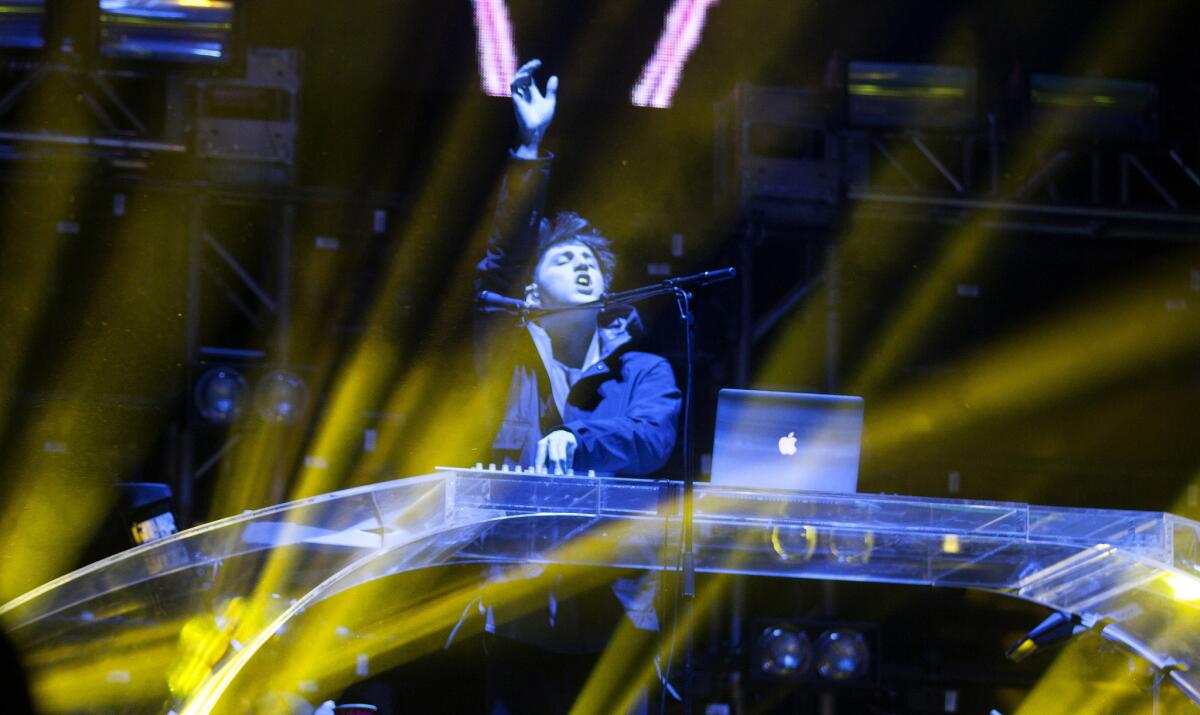
In June of last year, the electronic music producer Porter Robinson headlined a 30,000-capacity festival he’d booked at a park in Oakland. The fest, Second Sky, was a new entry into the festival market, and the Goldenvoice-produced event turned the 27-year-old into a festival mogul.
COVID-19 thwarted similar plans this year. But the fest, now called Secret Sky, still went on last weekend — as an 18 act, 14-hour livestream in a custom-built digital auditorium that worked like a role-playing video game for fans. Robinson performed his headline set from a room in his parents’ house.
“My mom was making sandwiches and snacks for me,” Robinson laughed about the surreality of the new livestream era. “I’d sealed off the windows with blankets to block the light. It was actually pretty cozy.”
By some metrics, it was an even bigger hit online. Over 4 million fans watched it live, and it was the most popular stream on YouTube and the top-listed stream on Twitch over the weekend. Tickets were free, unlike last year’s in-person event, but the event raised over $65,000 for MusicCares’ COVID-19 charity from sponsors like Postmates and Sapporo. Fans might be willing to pay to see something similar.
“If things reopened tomorrow, there might not be a need to do this, but I do see these experiences as being inevitable as part of future,” Robinson said. “I really like how the rules of livestreams aren’t well defined. It feels like a golden era.”
More to Read
The biggest entertainment stories
Get our big stories about Hollywood, film, television, music, arts, culture and more right in your inbox as soon as they publish.
You may occasionally receive promotional content from the Los Angeles Times.
